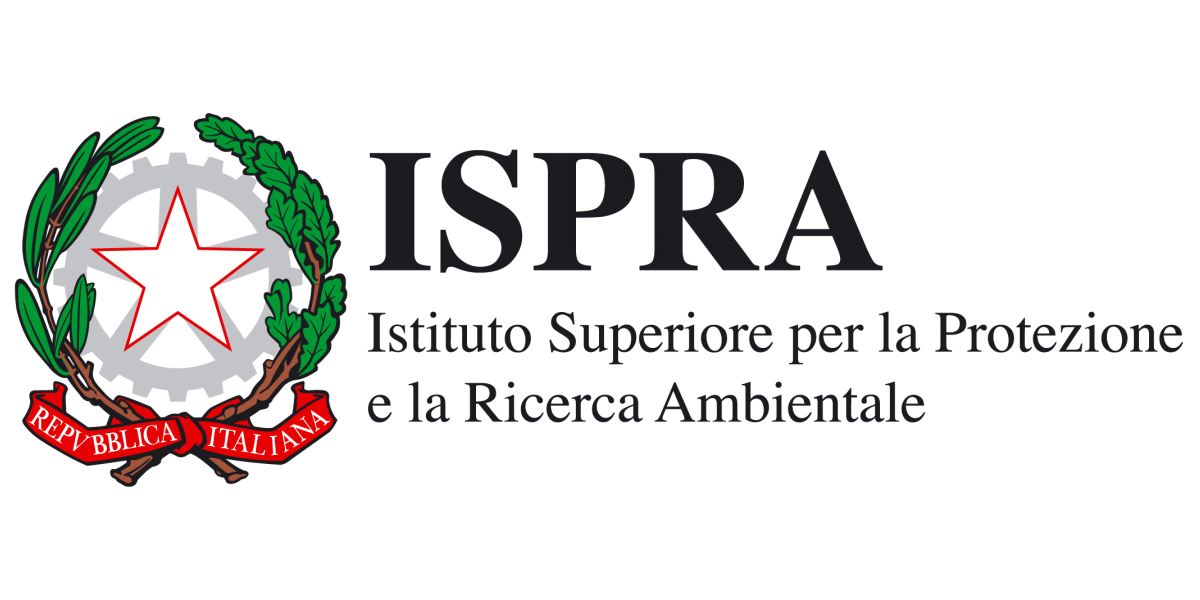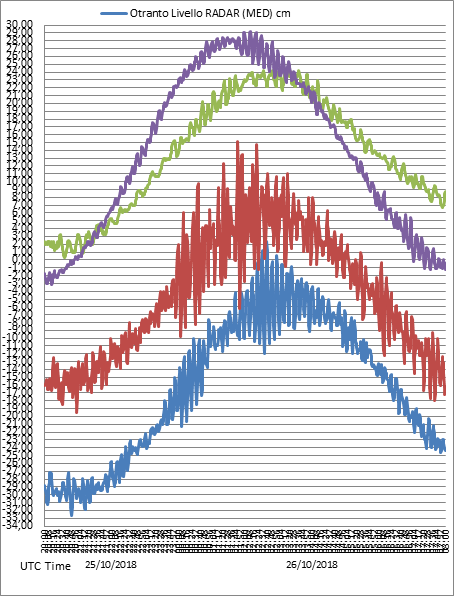
 Stations of the National Tide Gauge Network (RMN). (RMN).
Stations of the National Tide Gauge Network (RMN). (RMN).  Tide gauge recordings at some stations of the RMN collected during the tsunami event observed along the Ionian coast of Puglia, Calabria and Sicily following the strong seismic event recorded in the Ionian Sea, during the night between 25 and 26 October 2018 with epicentre located a few dozen miles off the southwest of the Greek island of Zakynthos.
Tide gauge recordings at some stations of the RMN collected during the tsunami event observed along the Ionian coast of Puglia, Calabria and Sicily following the strong seismic event recorded in the Ionian Sea, during the night between 25 and 26 October 2018 with epicentre located a few dozen miles off the southwest of the Greek island of Zakynthos.
ISPRA - Istituto Superiore per la Protezione e la Ricerca Ambientale - together with the Istituto Nazionale di Geofisica e Vulcanologia and the Civil Protection Department, constitutes one of the components of the National Alert System for Tsunamis (SiAM) generated by earthquakes in the Mediterranean Sea.
The institutional tasks of ISPRA include, in fact, the collection and unification at a national level of the data on the state of the coasts, as well as the collection of the data, including in real time, related to the maritime climate, their processing and dissemination. The ISPRA also coordinates the National System of Environmental Protection (SNPA) within whose framework the criteria, methods and standards for data collection, analysis and consultation are adopted.
These tasks are carried out by ISPRA through the National Centre for Coastal Protection, Marine Climatology and Operational Oceanography (CN-COS), which has considerably expanded the Institute's activities in the field of detection and measurement of anomalous waves.
In particular, the CN-COS manages the meteorological-marine monitoring networks, including the National Tide Gauge Network (RMN), which are also very important for real-time monitoring of tsunami waves which can affect some, sometimes very extensive, stretches of our coasts.
The National Tide Gauge Network is currently composed of 36 measurement stations (tide gauges), distributed uniformly throughout the country and in the smaller islands (Lampedusa, Ginostra, Elba, Tremiti).
These stations are mainly located within the ports and carry out an accurate and continuous monitoring of some weather parameters (wind and atmospheric pressure) and of the sea level fluctuations due both to the cycle of astronomical tides and to other reasons, such as the weather as in the case of storm waves or, also, to geophysical events such as earthquakes, volcanic eruptions and underwater landslides.
Sea level monitoring is carried out through three types of sensors: a mechanical one (floating level sensor), a microwave one (radar) with a millimetre accuracy and an ultrasonic one, which has been present in the RMN since 1998 and serves both as a historical reference for the collected data and for calibrating the other instruments.
By comparing the measurements produced in each of the stations by the three different sensors, ISPRA is able to guarantee maximum precision and perfect continuity of the data series.
The RMN is equipped with an autonomous local system to store and manage the data collected in each station, with a real-time data transmission system (UMTS), with a device for receiving, pre-processing, viewing and filing data installed at the headquarters of CN-COS in Rome. Through the latter device, the data are sent in real time to the Operations Room of the Civil Protection Department and to the Operations Room of the CAT-INGV.
Nine particularly strategically important stations for measuring sea level anomalies - as in the case of a tsunami - have a second satellite data transmission system, which ensures connection even in the event of failure or malfunction of the UMTS system.
In the event of a tsunami induced by an earthquake, the tide gauge data play a very important role: they are necessary, in fact, to confirm the generation of a tsunami after the first alert made by the CAT-INGV, and to quantify the impact of the tidal waves along the various stretches of coastline. In fact, even when a certain earthquake has the necessary characteristics to create a tsunami (magnitude, location and depth) it is not necessarily able to generate it.
The creation of a tsunami depends, in fact, on the vertical component of the displacement of the two blocks of rock which move during the earthquake, i.e. on the volume of water which they are able to move by abruptly rising or lowering because of the earthquake.



